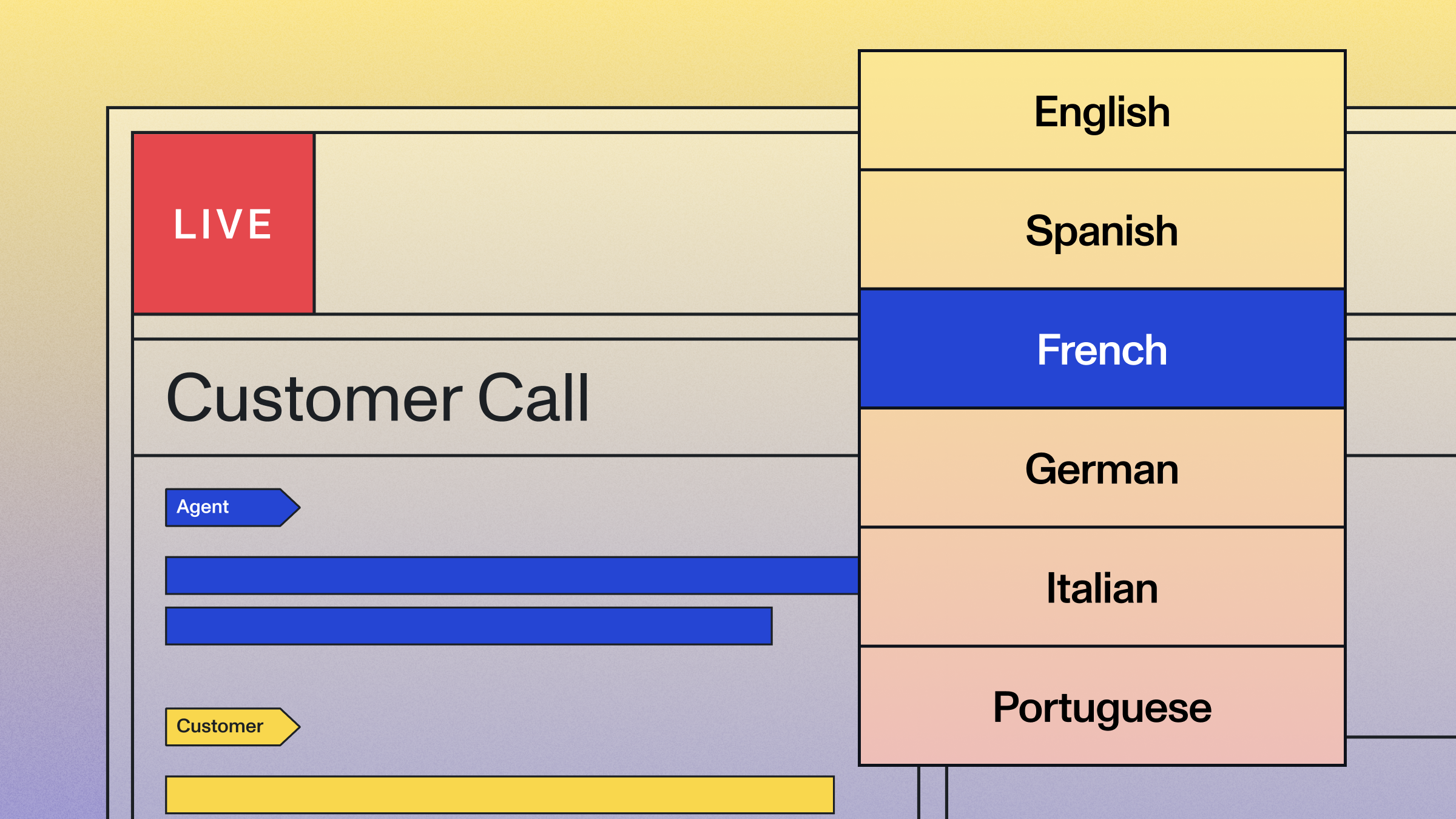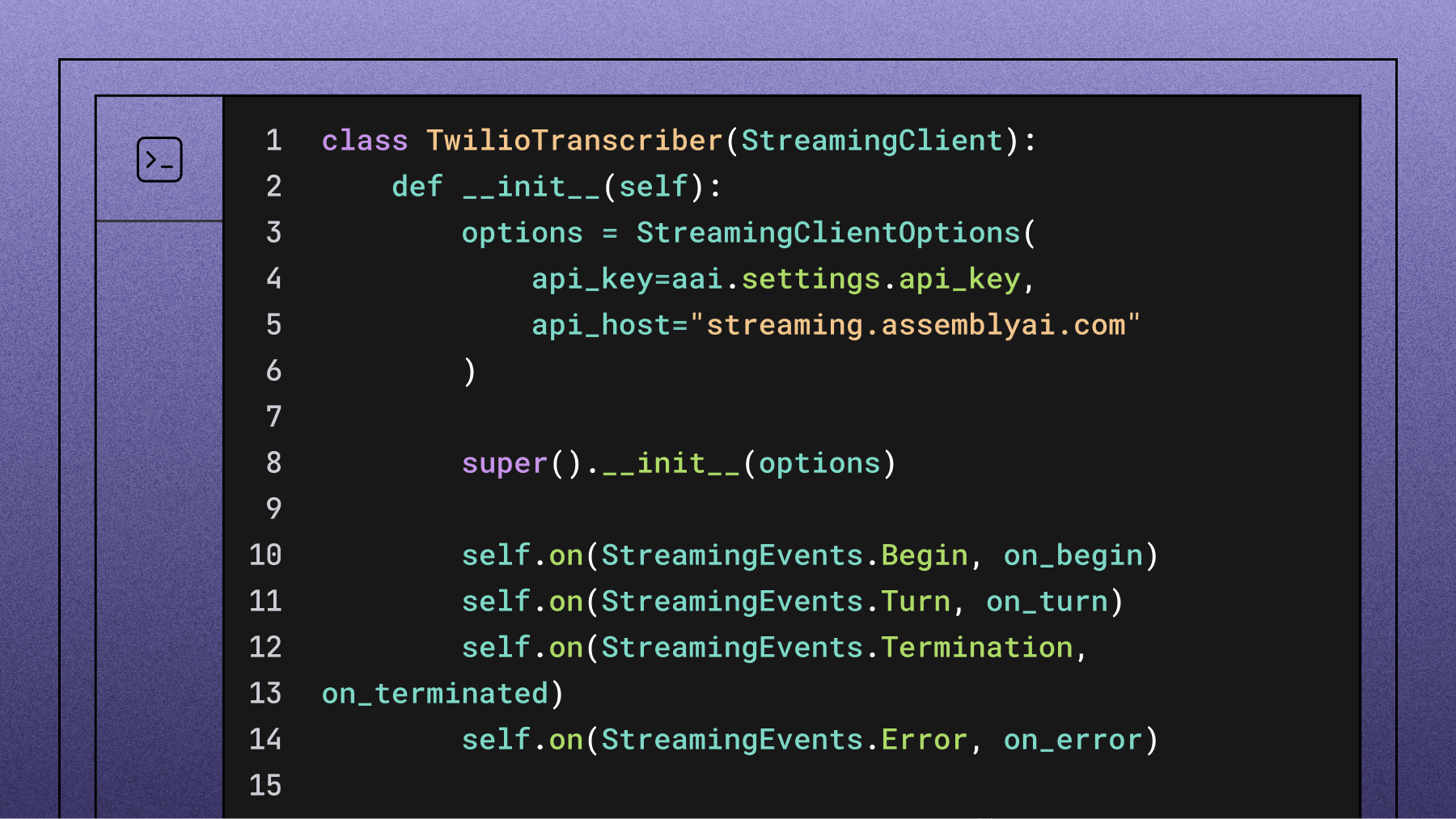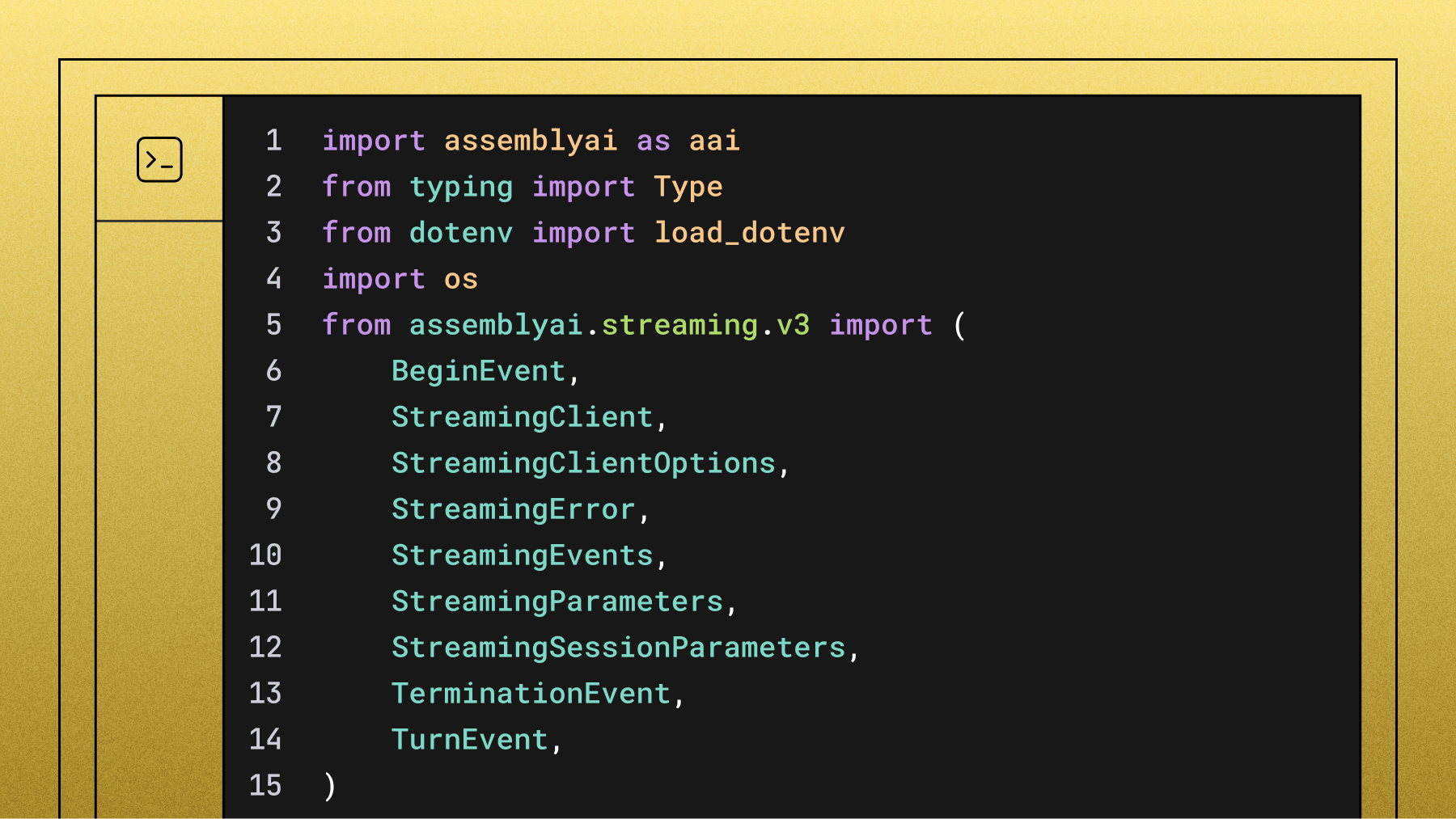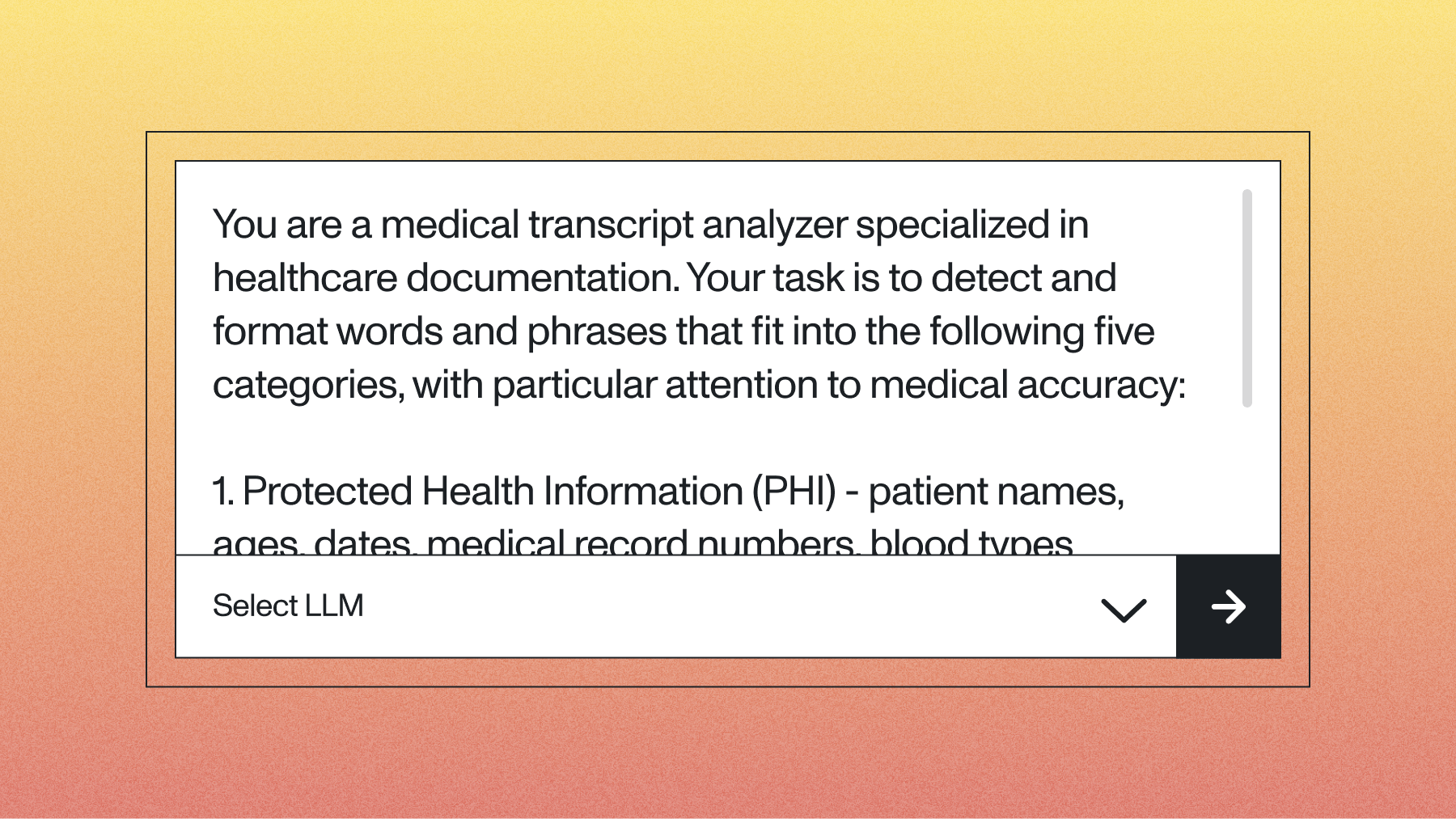Top APIs and models for real-time speech recognition and transcription in 2025
Compare the best real-time speech recognition APIs and models for 2025. Evaluate latency, accuracy, and integration complexity across cloud APIs and open-source solutions.



Speech recognition adoption is accelerating across industries. Fortune Business Insights projects the global market will reach $19.09 billion in 2025, driven by a 23.1% compound annual growth rate as AI voice agents and real-time applications become mainstream.
The challenge for developers: choosing the right speech recognition solution isn't straightforward. Developers building voice-enabled applications face a maze of options, each claiming superior performance. Some APIs excel at accuracy but struggle with latency. Others offer lightning-fast responses but compromise on transcription quality. Open-source models promise cost savings but require significant engineering overhead.
We've tested and analyzed the leading real-time speech recognition APIs and models available in 2025. This analysis examines cloud-based APIs, open-source alternatives, and hybrid solutions across the metrics that matter most: latency, accuracy, language support, integration complexity, and cost.
Quick comparison: top real-time speech recognition solutions
Before diving into detailed analysis, here's how the leading solutions stack up across key performance criteria:
Key criteria for selecting speech recognition APIs and models
Choosing the right solution depends on your specific application requirements. Here's what actually matters when evaluating these services:
Latency requirements drive everything
Real-time applications demand different latency thresholds—and this drives your entire architecture. Voice agent applications targeting natural conversation need sub-500ms initial response times to maintain conversational flow. Live captioning can tolerate 1-3 second delays, though users notice anything beyond that. Batch processing applications don't have strict latency requirements.
The golden target for voice-to-voice interactions is 800ms total latency under optimal conditions—this includes speech recognition, LLM processing, and text-to-speech synthesis combined. Most developers underestimate how much latency impacts user experience until they test with real users.
Accuracy vs. speed trade-offs are real
Independent benchmarks reveal that when formatting requirements are relaxed, AssemblyAI and AWS Transcribe achieve the best real-time accuracy. However, applications requiring proper punctuation, capitalization, and formatting often see different performance rankings.
Your accuracy requirements determine everything else:
- Voice commands: 85-90% accuracy may suffice
- Live captioning: 95%+ accuracy expected
- Medical/legal transcription: 98%+ accuracy required
Don't assume higher accuracy always wins. A 95% accurate system that responds in 300ms often provides better user experience than a 98% accurate system that takes 2 seconds.
Language support complexity
Real-time multilingual support remains technically challenging. Most solutions excel in English but show degraded performance in other languages.
If you're building for global users, test your target languages extensively. Marketing claims about "100+ languages supported" rarely translate to production-ready performance across all those languages.
Integration complexity matters more than you think
Cloud APIs offer faster time-to-market but introduce external dependencies. Open-source models provide control but require significant engineering resources. Most teams underestimate the engineering effort required to get open-source solutions production-ready.
Consider your team's expertise and infrastructure constraints when evaluating options. A slightly less accurate cloud API that your team can integrate in days often beats a more accurate open-source model that takes months to deploy reliably.
Cloud API solutions
AssemblyAI Universal-Streaming
AssemblyAI's Universal-Streaming API hits the sweet spot for voice agents—300ms latency (P50) that feels instant to users, plus immutable transcripts that won't change mid-conversation. The service processes audio faster than real-time speed, so you're never waiting for transcription to catch up.
What sets it apart: 99.95% uptime SLA for production reliability, consistent performance across accents and audio conditions, and comprehensive documentation that actually helps developers integrate quickly.
This is our top pick for production voice applications requiring reliable, low-latency transcription, particularly when integrated with voice agent orchestration platforms.
Deepgram Nova-3
Deepgram's Nova-3 model offers real-time multilingual capabilities, supporting 50+ languages with streaming transcription. The platform reports significant improvements in word error rates and offers extensive customization options for domain-specific vocabulary.
Choose this for applications requiring real-time multilingual transcription or specialized domain adaptation where English-only solutions won't work.
OpenAI Realtime API
OpenAI's Realtime API takes a different approach, offering speech-to-speech capabilities that bypass traditional transcription workflows. The service targets 500ms time-to-first-byte latency for conversational AI applications.
The direct speech-to-speech processing eliminates transcription bottlenecks, integrates seamlessly with OpenAI's conversational AI capabilities, and feels optimized for dialogue-based applications with advanced natural language understanding, but lacks customization and transparency.
AWS Transcribe
Amazon's Transcribe service provides solid real-time performance within the AWS ecosystem.
The seamless integration with AWS services, competitive pricing at $0.024 per minute (tiered pricing starting at this rate), extensive language support (100+ languages), and strong enterprise features make it a safe choice for many applications.
Perfect for applications already using AWS infrastructure or requiring extensive language support. It's not exciting, but it works reliably.
Google Cloud Speech-to-Text
Google's Speech-to-Text API offers broad language support but consistently ranks last in independent benchmarks for real-time accuracy. The service works adequately for basic transcription needs but struggles with challenging audio conditions.
The extensive language support (125+ languages) and integration with Google Cloud ecosystem appeal to some developers. Pricing structure ($0.024/min varies by model and usage tier) and advanced audio processing features provide reasonable value.
Choose this for legacy applications or projects requiring Google Cloud integration where accuracy isn't critical. We wouldn't recommend it for new projects unless you're already locked into Google's ecosystem.
Microsoft Azure Speech Services
Azure's Speech Services provides moderate performance with strong integration into Microsoft's ecosystem. The service offers reasonable accuracy and latency for most applications but doesn't excel in any particular area.
Solid integration with Microsoft ecosystem, reasonable accuracy and latency performance, enterprise-grade security and compliance, and comprehensive SDK support make it adequate for many use cases.
Best for organizations heavily invested in Microsoft technologies or requiring specific compliance features. It's a middle-of-the-road option that works without being remarkable.
Open-source models
WhisperX
WhisperX extends OpenAI's Whisper with real-time capabilities, achieving 4x speed improvements over the base model. The solution adds word-level timestamps and speaker diarization while maintaining Whisper's accuracy levels.
What makes it worthwhile: 4x speed improvement over base Whisper, word-level timestamps and speaker diarization, 99+ language support, and full control over deployment and data.
The implementation challenges are significant though. You'll need significant engineering effort for production deployment, expect variable latency depending on hardware and optimization (380-520ms in optimized setups), and limited real-time streaming capabilities without additional engineering.
This works for organizations requiring self-hosted solutions with advanced features and engineering resources to optimize performance. Don't underestimate the engineering effort required.
Whisper Streaming
Whisper Streaming variants attempt to create real-time versions of OpenAI's Whisper model. While promising for research applications, production deployment faces significant challenges.
The advantages include proven Whisper architecture, extensive language support (99+ languages), no API costs beyond infrastructure, and complete control over model and data.
Implementation challenges are substantial: 1-5s latency in many implementations (varies by implementation), requires extensive engineering work for production optimization, performance highly dependent on hardware configuration, and limited documentation and support resources.
This works for research projects or prototyping where engineering resources are available for optimization. We wouldn't recommend it for production applications unless you have a dedicated ML engineering team.
Which API or model should you choose?
Your choice depends on specific application requirements and constraints. Here's our honest assessment:
For production voice agents requiring reliability and low latency: AssemblyAI Universal-Streaming provides the best balance of performance and reliability. The 99.95% uptime SLA and ~300ms latency make it suitable for customer-facing applications where downtime isn't acceptable.
For AWS-integrated applications: AWS Transcribe provides solid performance within the AWS ecosystem, particularly for applications already using other AWS services. It's not the best at anything, but it integrates well.
For self-hosted deployment with engineering resources: WhisperX offers a solid open-source option, providing control over deployment and data while maintaining reasonable accuracy levels. Consider this alongside other free speech recognition options if budget constraints are a primary concern.
Proof-of-concept testing methodology
Before committing to a solution, test with your specific use case. Most developers skip this step and regret it later:
- Evaluate with representative audio samples that match your application's conditions
- Test latency under expected load to ensure performance scales
- Measure accuracy with domain-specific terminology relevant to your application
- Assess integration complexity with your existing technology stack
- Validate pricing models against projected usage patterns
Don't trust benchmarks alone—test with your actual use case. Performance varies significantly based on audio quality, speaker characteristics, and domain-specific terminology.
Final words
You've got solid options for real-time speech recognition in 2025. Cloud APIs lead in reliability and ease of integration, while open-source models provide control and cost advantages for organizations with engineering resources.
The key to success isn't choosing the highest-performing solution overall—it's selecting the solution that best matches your specific requirements for latency, accuracy, language support, and integration complexity.
Start with proof-of-concept testing using representative data from your application. This practical approach will reveal which solution performs best for your specific use case, beyond what general benchmarks suggest. Most teams that skip this step end up switching providers later, which is expensive and time-consuming.
For hands-on implementation guidance, explore these step-by-step voice agent examples or learn how to build a real-time voice bot from scratch.
Frequently Asked Questions (FAQs)
1. Can speech-to-text APIs identify silence or overlapping speech in audio?
AssemblyAI’s streaming API provides detailed word-level timestamps and immutable “turn” objects—which can help detect silences between turns and manage overlapping speech. Each word object includes start, end, and word_is_final, and the TurnEvent can help delimit speech turns.
2. Can AI identify important keywords in a conversation?
Yes. You can enable AssemblyAI’s “key phrases” (auto_highlights) model in your transcription request by setting auto_highlights=true. The API responds with a list of highlighted words/phrases, each with text, relevancy rank, count, and timestamps.
Lorem ipsum dolor sit amet, consectetur adipiscing elit, sed do eiusmod tempor incididunt ut labore et dolore magna aliqua. Ut enim ad minim veniam, quis nostrud exercitation ullamco laboris nisi ut aliquip ex ea commodo consequat. Duis aute irure dolor in reprehenderit in voluptate velit esse cillum dolore eu fugiat nulla pariatur.




%20is%20Being%20Used%20Today.png)
